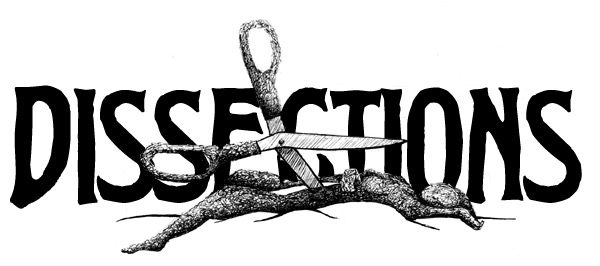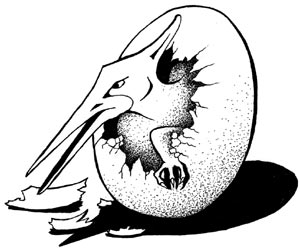[an error occurred while processing this directive]


Review
Tales of the Weird – from the British Library
Weird Woods: Tales from the
Haunted Forests of Britain, ed. John Miller (2020); Heavy Weather:
Tempestuous Tales of Stranger Climes, ed. Kevan Manwaring (2021);
Dangerous Dimensions: Mind-bending Tales of the Mathematical Weird,
ed. Henry Bartholomew (2021); Queens of the Abyss: Lost Stories
from the Women of the Weird, ed. Mike Ashley, 2020
Gina Wisker
The British Library continues to publish a fascinating series, Tales of the Weird, which brings together a mixture of well-known and relatively or completely unknown short stories, on a range of extraordinary topics. Each one has a beautiful, startling cover, and taken together they offer a unique insight into weird and speculative tales, mostly of the late 19th and early to mid-20th century. In last year’s Dissections I discussed three of these special books and do so again this year. In Weird Woods, edited by John Miller (2020), the haunted forests of Britain are revisited, their links with pagan myth and magic explored. Tales come from the eerie and dark, enticing and threatening parts of the country, such as the Yorkshire Dales, Dartmoor and other forests, and link the woods with pagan histories, folklore, magic.
In Heavy Weather (2021), ed. Kevan Manwaring, is a collection of short stories dealing with the weather, terrifying natural events and incidents in strange moments and places, and speculative horrors of hitherto unpredictable creatures. Places turn against the humans who enter or are stuck in them, and creatures once living side by side with us humans turn destructive. The stories show how elements of nature are actually uncontrollable now or soon could be. Daphne du Maurier’s ‘The Birds’ (1953) is a really good example of this, a tale written just after the Second World War, which emphasises the insecurities and threats of living on the coast, constantly concerned about invasion, which for the British as a small island nation is always just under the surface. This is a tale grown from Freud’s ‘Uncanny’ (1919) and E.T.A. Hoffman's ‘The Sandman’ (1885). ‘The Birds’ tells of a moment of developing threat based on the unfamiliar behaviour of ordinary birds, not just the occasionally dangerous crows and seagulls, but the small songbirds who gradually encroach upon, then suddenly viciously attack, invade and kill people of a small Cornish village. But actually, while we focus on one man and his family and his inability to shore up his home against the consistently invading attacking birds, so the comfort and certainty that soon the army or the RAF or somebody from central government will rescue them (because this must be an isolated incident) is wiped away. The radio goes silent, the RAF planes suffer bird strikes and crash in the sea. No one rescues the community because this is possibly the end of the world. This scenario, of course, is played out in a number of novels or films, such as 10 Cloverfield Lane and War of the Worlds, and most end of the world films where central government goes silent and you're left on your own (to die or suddenly be rescued). But the particular terror of invading, attacking birds is one of body horror as well as natural horror. As in Hoffman’s ‘The Sandman’, they go for your eyes, removing sight before continuing through and systematically attacking and killing everybody. If you're bird phobic this is not a tale for you, but it established, along with Rebecca (1938), Daphne du Maurier’s reputation, and like Rebecca was turned into a successful Hitchcock film (in the Hitchcock film the British village is transposed to a US coastal town).
In this collection we also have Herman Melville’s ‘The Lightning Rod Man’ (1854), Edgar Allan Poe's ‘A Descent into the Maelstrom’ (1841), which focuses on disorder, chaos, terror, this time in the sea, and Algernon Blackwood’s ‘Mayday Eve’ (1907), which plays into and from folk horror, the dangerous rituals in country settings. There are tales about earthquakes, monsoons, cyclones, creature invasion: ‘The Boy Who Predicted Earthquakes’, Margaret St Clair (1950); Gerald's Vance's ‘Monsoons of Death’ (2010); and William Hope Hodgson’s ‘Through the Vortex of a Cyclone’ (1909). Some of these tales are very familiar, some are from obscure journals and newspaper publications, little known. Another on creature attack is Doris Lessing's ‘A Mild Attack of Locusts’ (1955), which underplays the horror of this event. This is an exciting collection bringing together the familiar, such as a tale by Mary Shelley: ‘History of a Six Weeks Tour’ (1817), and the less well known. It is also very topical in the age of the Anthropocene, when the weather is beyond any human attempt at control, as Manwaring says in the introduction, ‘in an age where extreme weather events are becoming increasingly frequent - storms; floods; droughts; uncontrollable bushfires; rapidly decreasing glaciers this little book brings the full horror of the damage of the anthropocene into view.’
Dangerous Dimensions: Mind-bending tales of the Mathematical Weird, ed. Henry Bartholomew, contains a fascinating variety of stories, and like the other books in the series has insightful introductory statements before each . On ‘The Library of Babel’ by Jorge Luis Borges (1941), for instance, Bartholomew talks of how this tale ‘asks the reader to ponder the nature of Infinity in a geometrically symmetrical world library’. A favourite story of mine, this begins with ‘the universe brackets which others call the library … composed of an indefinite, perhaps infinite number of hexagonal galleries’. Borges’s library reminds us of Max Escher’s pictures and also of the great libraries of Trinity, Dublin and the Thomas Fisher rare book library at the University of Toronto. It seems to be a parallel world or an example of the world. This library is also modelled on the library of Babylon, with references to a time before pyramids, symbols, endless hexagons. Attempts to try and understand it are perplexed: ‘for every rational line or forthright statement there are leagues of senseless cacophony, verbal nonsense, and incoherency.’ It is asserted that here in particular it is clear that it is but a ‘vain and superstitious habit’ to try ‘to find sense in books’, equating such a quest with attempting ‘to find meaning in dreams or in the chaotic lines of the palm of one’s hand’. There are identical books, jumbled books and some sense that the ‘fundamental mysteries of mankind’ will be revealed through the books. Even the word ‘infinite’ cannot describe it because those travelling eternally in the library, like in life, will find the same over and over. This disorder or order, the futile attempts at understanding and knowing, are all embodied in this fascinating, imaginative construction, which reflects ways of trying to make sense of the world: ‘if any eternal traveller should journey in any direction, he would find after untold centuries that the same volumes are repeated in the same disorder – which, repeated, becomes order’. For the narrator: ‘My solitude is cheered by their elegant hope’. There's no way out or through this nightmare of searching for sense and understanding, especially when travelling at night, melancholy, round each hexagon and every well-arranged shelf within it without coming across a single librarian. It reminds us perhaps of all the large libraries we've tried to find things in, as well as of course the state of existence.
May Sinclair’s ‘The Nature of the Evidence’ (1922) might remind us of Poe’s returned dead wives, but has some other very weird turns, unsurprisingly so, as she was an advocate of women’s rights, a suffragette, so undying love would probably be too straightforward an ending. The opening emphasises the veracity of the ghost story by using a reliable narrator and ‘evidence’, and tells of Marston, whose lovely wife Rosamund dies, leaving him bereft but oscillating between terrible loss and the probability of marrying again (advised by the living Rosamund), which he does. However, when he tries to go to bed with the new wife, Pauline, Rosamund, the ghost, is always first in the bed. It would be amusing if it wasn’t also terrifying, and shows insight into the nature of re-marrying after the death of a partner. But it is weirder than this. Marston’s interaction with the dead wife is elevated above that (largely potential interaction) with the new wife, and is instead ‘some terrible and exquisite contact’. Marston advocates getting rid of the body, and as Sinclair notes, whatever that weird, delectable and unspeakable encounter was: ‘He couldn’t go back to Pauline after that’. Mary Elizabeth Braddon, Edith Nesbit and many other well-known women writers, often of children’s stories, are in here. Often they have been published in either Weird Tales (Mary Elizabeth Counselman, author of ‘The Unwanted’ (1951), in this collection was called the ‘Queen of Weird Tales’ and frequently published there), or more obscurely in pulp magazines on either side of the Atlantic. Leonora Carrington’s ‘The Seventh Horse’ (1930s) is a very strange tale and probably a surprising output but also maybe one we might expect from a surrealist painter. It begins with proprietorial women annoyed that a strange creature is hopping around their garden, and Hevalino who sounds like a person but behaves like and moves around with her six horses. She challenges an ugly bird with being eaten should he not tell of the discussions in the big house. Table time discussions there concern the revelation that the wife, Mildred, is pregnant, to the astonishment of her husband. As a spoiler, the story ends with Mildred dead near the stable, her body respectably ‘stuffed’ into a black coffin, and a strange little new foal, a seventh horse in the stable. These weird tales by women disturb familiar storyline, contexts and interpretations of events and also undercut and challenge conventional relationships.
The collections of the weird bring together work by the famous and popular and the less well known, those who publish in the mainstream, and in popular pulp fictional forms, some of whose work is being reprinted and others who would otherwise remain lost in the archives. It is a labour of love and scholarship, the results are rich and fascinating.
Link to the British Library shop:
https://www.google.com/search?q=british+library+
shop+tales+of+the+weird+series&rlz=1C1CHBF_
enGB879GB879&oq=british&aqs=chrome.1.
69i60j69i59l3j69i57j69i60l3.3604j0j7&sourceid
=chrome&ie=UTF-8
Home
